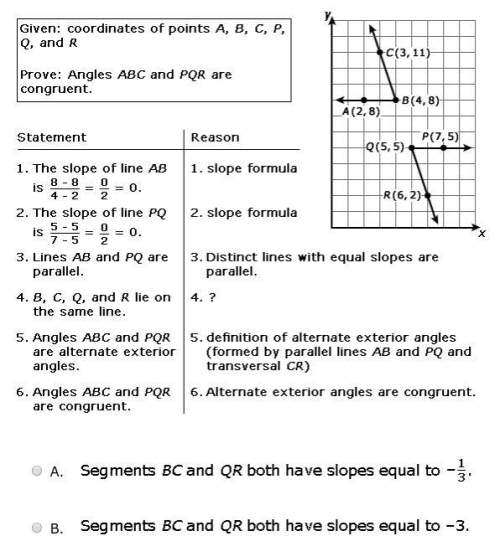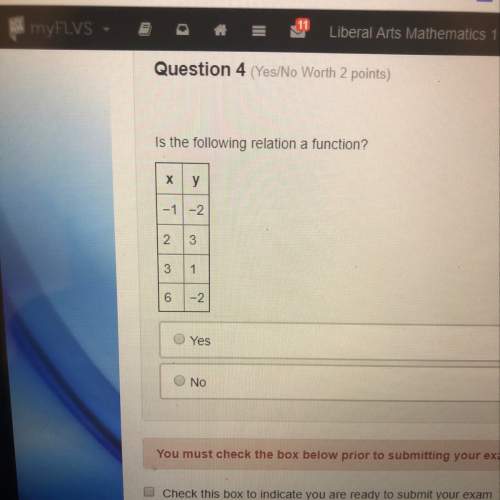
Mathematics, 16.04.2021 04:00 sairaanwar67
The addition rule for probability P(A or B)=P(A)+P(B)-P(A and B) is used for:
1) finding the probability that A and B both happen
2)finding the probability that A doesn't happen, but B does happen.
3)finding the probability that A or B or both happen.
4)finding the probability that A happens, then B happens.

Answers: 1
Another question on Mathematics

Mathematics, 21.06.2019 18:00
Given: and prove: what is the missing reason in the proof? given transitive property alternate interior angles theorem converse alternate interior angles theorem
Answers: 1

Mathematics, 21.06.2019 19:00
Me asap on # : explain how factoring a trinomial, ax^2+ bx+ c, when a does not equal 1 different from factoring a trinomial when a = 1.
Answers: 2

Mathematics, 21.06.2019 20:30
Elizabeth claims that the fourth root of 2 can be expressed as 2^m since (2^m)^n = 2. find the values of m and n for the case where elizabeth's claim is true.
Answers: 3

You know the right answer?
The addition rule for probability P(A or B)=P(A)+P(B)-P(A and B) is used for:
1) finding the probab...
Questions






Mathematics, 13.04.2021 01:00


Spanish, 13.04.2021 01:00


Mathematics, 13.04.2021 01:00




Business, 13.04.2021 01:00

Mathematics, 13.04.2021 01:00



Mathematics, 13.04.2021 01:00

Mathematics, 13.04.2021 01:00

Chemistry, 13.04.2021 01:00





